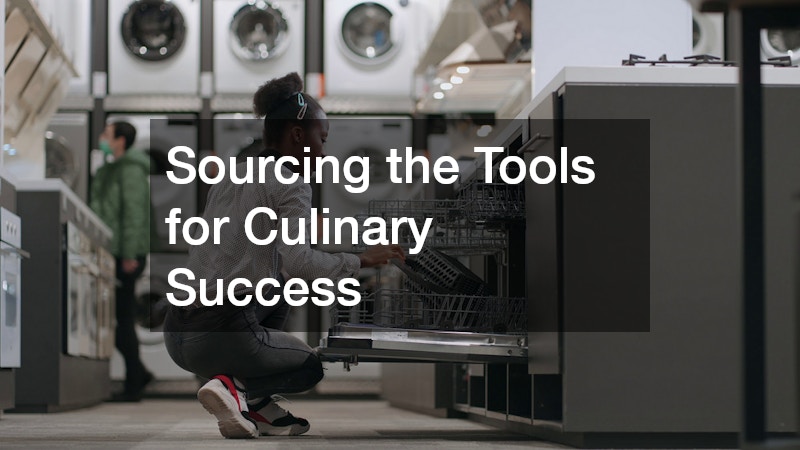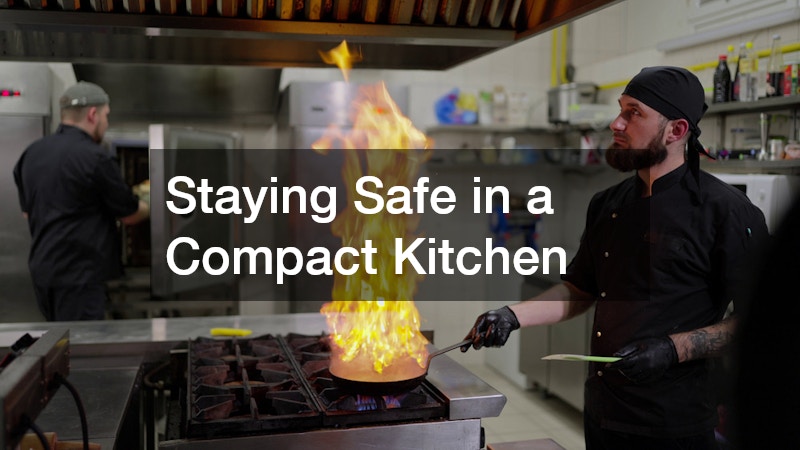The rise of street food culture and the growing demand for convenient, high-quality meals on the go have made food stands more relevant than ever. From bustling city corners to local festivals and farmers’ markets, these mobile eateries are becoming staples in communities across the country. With lower startup costs than traditional restaurants and the ability to reach diverse audiences, food stalls offer a dynamic entry point into the food service industry—one that blends creativity, mobility, and entrepreneurship.
Starting a commercial food stand can be a rewarding venture for any culinary enthusiast or entrepreneur looking to dive into the food industry. As the popularity of mobile kitchens continues to rise, entering this field can offer a unique opportunity to showcase your culinary skills, all while operating from a flexible location. However, successfully navigating this business requires careful planning and consideration of various factors, including equipment, branding, compliance with safety regulations, and effective marketing strategies to optimize customer engagement and experience. In this comprehensive guide, we will delve into key aspects of setting up and running a successful food stand, ensuring that your culinary business both flourishes and stands out from the competition.
Durability That Drives Your Mobile Kitchen
When it comes to a commercial food stand, the durability of your equipment and setup is paramount. The mobile kitchen must withstand various weather conditions, frequent usage, and the rigors of transport. Investing in high-quality materials and finishes, such as commercial epoxy floor coating, can significantly increase the longevity of your stand.
The choice of materials plays a crucial role in the operational efficiency of your food stand. Stainless steel surfaces, for example, not only ensure easy cleaning but also resist rust and decay. Furthermore, selecting durable furniture and fixtures, specially designed for mobile kitchens, can provide a solid foundation for enduring service.
Additionally, consider how the layout of your stand contributes to its overall resilience. Opting for modular setups allows for flexibility in design, which can be advantageous during repairs or modifications. Prioritizing durability right from the design phase can lead to smoother operations and enhanced customer satisfaction over time.

Sourcing the Tools for Culinary Success
One of the most critical factors for your commercial food stand’s success is sourcing the right kitchen equipment. Collaborating with a reliable commercial kitchen equipment supplier can help you procure essential tools and appliances that meet both your culinary needs and safety standards. Staying up-to-date with the latest trends in kitchen equipment can also provide you with a competitive edge.
Be sure to consider both quality and functionality when choosing your appliances. Equipment should not only perform efficiently but also cater to the type of food you intend to serve. Investing in versatile tools allows you to expand your menu and adapt to changing customer preferences.
Moreover, ensure that you understand all compliance requirements related to kitchen equipment. By verifying that your appliances meet health and safety codes, you can avoid expensive fines and disruptions in your operations. This diligence in equipment sourcing contributes directly to your overall success in the mobile food industry.
Creating Irresistible Off-Peak Promotions
Once your commercial food stand is established, implementing marketing strategies can significantly enhance customer engagement. Promotions during slower hours, like a happy hour, not only attract a larger customer base but can also yield higher sales during times that usually see less foot traffic. Creative offerings, such as discounts or special menu items, can entice customers to visit your stand instead of competitors.
Engaging with customers during off-peak hours presents a unique opportunity for relationship building. By providing excellent service during these times, you can encourage repeat business and improve your stand’s reputation. Consider offering loyalty cards or special deals to repeat customers to encourage returning visits.
In today’s digital age, promoting your offers through social media and local advertising channels can significantly amplify your reach. Leveraging platforms like Instagram or Facebook allows for real-time engagement and immediate feedback, helping you fine-tune your promotional strategies. By creatively marketing your promotions, you can not only boost sales but also build a loyal customer base.

Cooling Solutions for Container Kitchens
Using a refrigerated shipping container as your food truck offers unique advantages—especially when it comes to maintaining the freshness of your ingredients. These container kitchens provide a solid, insulated structure that can easily accommodate built-in refrigeration systems, allowing you to store perishables at optimal temperatures throughout the day. This built-in climate control is essential not just for food safety, but also for preserving flavor and quality in every dish you serve.
When outfitting your container kitchen, prioritize refrigeration units that are designed for compact yet efficient spaces. The added interior height and square footage of a shipping container give you more room to install upright coolers or under-counter fridges without sacrificing prep space. Additionally, integrating cold storage directly into your setup allows you to minimize dependency on external supplies and better control inventory.
To further optimize freshness, implement inventory management strategies such as First In, First Out (FIFO). Clearly label ingredients with purchase dates and store them in accessible, organized sections to streamline rotation. This not only reduces waste but ensures that your customers consistently enjoy top-tier ingredients—helping your container-based food stand build a strong reputation and loyal following.
Branding That Travels With You
Branding is essential in establishing the identity of your food stall. A strong visual presence, marked by a well-designed business sign, can attract customers and foster recognition. Effective branding not only captures attention but also communicates what your stand represents and its culinary offerings.
Your logo, color scheme, and signage should all work together cohesively to create a memorable image in potential customers’ minds. Consider the locations where your stand will operate, and tailor your branding to appeal to local tastes and preferences. The right branding can create a loyal following, as customers are more likely to return if they have a distinct and positive memory associated with your brand.
Moreover, a consistent online presence that reflects your branding can further strengthen customer engagement. Use social media to share appetizing images, updates on menu offerings, and announcements of special promotions. The more recognizable you are, both offline and online, the stronger your commercial food stand becomes in the competitive marketplace.

Staying Safe in a Compact Kitchen
Safety should always be a priority when operating a commercial food stand. Working in a compact kitchen brings unique challenges, including the need for effective fire prevention methods. Implementing safety protocols and ensuring that all employees are trained can significantly mitigate risks associated with fires, equipment malfunctions, and other operational hazards.
Regular maintenance of cooking equipment and electrical appliances is critical in identifying potential issues before they lead to accidents. The installation of fire extinguishers and smoke detectors suitable for kitchens can provide an extra layer of protection. Furthermore, ensure that your staff is trained in proper emergency procedures, creating a safer and more responsive work environment.
Compliance with health and safety regulations is non-negotiable, as failure to adhere can lead to fines, shutdowns, and reputational damage. Frequent inspections and staying updated with local health codes ensure that your operations continue to run smoothly. Building a culture of safety not only protects your employees but also boosts customer confidence in your food stand’s reliability and professionalism.
Maximizing Space With Smart Storage
Efficient space utilization is essential for any commercial food stand, given the limited area you have to work with. A collaboration with a reputable kitchen cabinet company can provide bespoke storage solutions tailored for mobile operations. Utilizing vertical space with shelving and cabinets can effectively maximize your available area without overcrowding.
Smart storage unlocks the potential for better organization of your kitchen tools and ingredients, enhancing workflow efficiency. Clear labeling and thoughtful arrangement of supplies allow for swift access and inventory management. By keeping your workspace clutter-free, you can focus more on cooking and customer interaction.
Additionally, investing in multi-functional furniture can further enhance space use. Tables that can serve dual purposes and collapsible units can be incredibly effective when preparing meals in a confined area. Prioritizing functionality in your design will enable you to operate at peak efficiency, ultimately leading to higher customer satisfaction.

Protecting Your Mobile Investment
The investment in a commercial food stand can be significant; therefore, protecting this asset is crucial. Engaging with a local insurance company to obtain the right coverage can shield your business from unforeseen incidents. Policies tailored for mobile food businesses often include liability insurance, protection against equipment damage, and coverage for lost income due to sudden interruptions.
Understanding the various types of coverage available will empower you to make informed decisions about your policy. Ensure that your coverage meets both local regulations and your unique operational needs. By safeguarding your investment against potential risks, you create a more secure operational environment.
Maintaining thorough records, including receipts and contracts, can aid in the claims process if the need arises. Regular reassessment of your insurance coverage will also help ensure you are adequately protected as your food stand grows and evolves. Strong risk management is an essential component of long-term success in the mobile food industry.
Handling Waste Responsibly and Legally
Operating a commercial food stand also means being responsible for waste management. Proper disposal procedures, including engaging a cooking oil disposal service, are essential to minimize environmental impacts and adhere to local regulations. Awareness of waste management practices not only helps to stay compliant but also reflects positively on your business.
Implementing waste segregation practices can simplify the recycling process and ensure that food waste, recyclables, and other trash are handled appropriately. Encouraging sustainability within your operations can also attract environmentally conscious customers. By showcasing responsible practices, you can create a positive reputation for your food stand.
Regularly educating your team on waste disposal methods helps instill a culture of responsibility and awareness. Additionally, collaborate with local establishments to find eco-friendly initiatives that align with your business ethos. By managing waste legally and responsibly, you enhance operational efficiency and contribute positively to your community.
Where to Stock Up Before You Roll Out
Stocking up on supplies is a pivotal part of preparing your commercial food stand for success. Identifying a reliable restaurant supply store can significantly ease the process of procuring necessary ingredients, tools, and equipment. Familiarizing yourself with local suppliers can provide advantageous terms and potentially lead to cost savings.
Before launching, create a comprehensive inventory list of the items needed for your offerings. This may include everything from cooking tools to perishables tailored to your menu. Striking relationships with suppliers can also lead to better prices and access to fresh ingredients on demand.
Regularly evaluate your stock needs as your operation grows to ensure that your stand is always well-equipped. Implementing a systematic ordering process can help prevent stockouts and enhance your efficiency. Ultimately, sourcing locally not only supports the community but also contributes to the sustainability efforts of your business.
Running a successful commercial food stall involves a multifaceted approach that encompasses various essential aspects of operation. From investing in durable equipment, sourcing high-quality culinary tools, to engaging with effective marketing strategies, each detail plays a crucial role in making your mobile kitchen thrive. Moreover, focusing on safety, waste management, and branding will help establish a reputable and enduring presence in the competitive food industry.
It is vital to plan meticulously for each component, ensuring that your operations run smoothly and efficiently, meeting both health standards and customer expectations. As you embark on your culinary journey, remember that the quality of your offerings, the strength of your brand, and the commitment to excellence are what will set you apart and keep your customers coming back for more.
By leveraging the insights shared in this article, you can develop a strong foundation for your commercial food stand that not only supports your immediate goals but also lays the groundwork for future growth and success. Embrace the challenges and joys that come with this venture, and with determination, creativity, and strategic planning, your mobile food stand can become a beloved fixture in your community.



